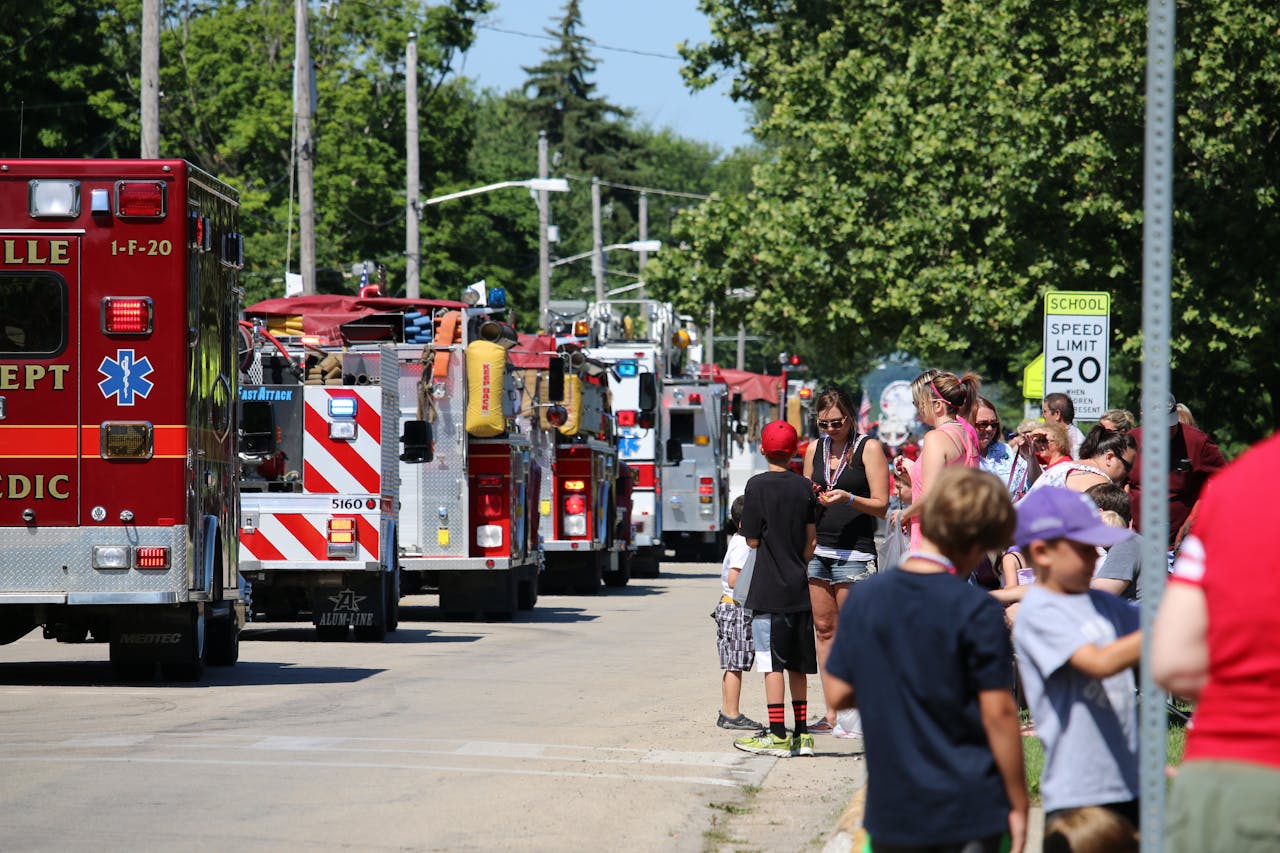Fire department patches are more than just decorative pieces sewn onto uniforms. They are emblems of bravery, symbols of community service, and icons that represent the rich history and traditions of firefighting. These patches, often unique to each department, tell stories of heroism, honor, and commitment. This article explores the historical significance of fire department patches, their evolution, the meanings behind their designs, and their impact on both firefighters and the communities they serve.
Firefighting is a profession steeped in tradition and history. Fire departments around the world have a long-standing culture of pride and camaraderie, which is often reflected in the symbols and insignias they use. One of the most recognizable symbols of a fire department is the patch worn on the uniforms of its members. These patches serve as more than just identifiers; they are visual representations of the department’s heritage, values, and achievements.
The tradition of fire department patches dates back to the early days of organized firefighting. Over the years, these patches have evolved from simple identifiers to complex designs that incorporate a wealth of symbolism and meaning. They often feature images and elements that are significant to the department’s history, location, or notable incidents. The careful design of these patches reflects the department’s identity and serves as a source of pride for its members.
In this article, we will delve into the history of fire department patches, examining their origins, evolution, and the symbolism embedded in their designs. We will also explore how these patches have become icons of the firefighting profession and their role in fostering a sense of unity and pride among firefighters. Through this exploration, we aim to shed light on the importance of these emblems in preserving the legacy and spirit of fire departments.
Origins and Evolution of Fire Department Patches
The origins of fire department patches can be traced back to the early days of organized firefighting in the 19th century. As fire brigades and departments began to formalize, there was a need for visual identifiers that distinguished members and units. Early patches were often simple and utilitarian, featuring basic elements like the department’s name, city, or a generic firefighting symbol such as a crossed ax or ladder.
Early Patches and Symbols
In the early days, fire departments used a variety of symbols and insignias to identify their members. These included badges, armbands, and simple cloth patches. The design of these early patches was straightforward, often featuring the department’s name or initials along with basic firefighting imagery. The primary purpose was to provide a clear and recognizable identifier for firefighters, especially during emergencies when quick identification was crucial.
As firefighting equipment and techniques evolved, so did the symbols used on patches. For instance, the Maltese cross became a popular symbol among fire departments, representing protection and courage. This cross, with its eight points, is historically associated with the Knights of Malta, who were known for their bravery in battle and their care for the wounded. The adoption of the Maltese cross by fire departments was a nod to these virtues, aligning with the firefighter’s role as a protector and savior.
The Development of Custom Patches
By the mid-20th century, fire department patches had become more elaborate and personalized. Departments began to design custom patches that incorporated unique elements related to their specific community, history, or significant events. These custom patches often featured detailed artwork, including local landmarks, mascots, or symbols representing major fires or rescues.
The development of custom patches was driven by a growing sense of pride and identity within fire departments. As firefighting became a more professionalized and respected field, departments sought to distinguish themselves and celebrate their achievements. Custom patches served as a way to showcase the unique qualities of each department, from their history to their specialized skills.
Modern Fire Department Patches
Today, fire department patches are highly detailed and often rich in symbolism. Modern patches frequently incorporate a variety of elements, including:
- Department Name and Location: The name of the department and the city or region it serves are typically featured prominently.
- Firefighting Symbols: Common symbols include axes, ladders, hoses, fire hydrants, and the Maltese cross.
- Specialty Units: Patches may include symbols representing specialized units, such as hazardous materials teams, rescue squads, or paramedics.
- Historical and Cultural Elements: Many patches incorporate local landmarks, historical references, or cultural symbols that reflect the community served by the department.
- Color and Design: The use of color and design elements varies widely, often reflecting the personality and character of the department.
The evolution of fire department patches from simple identifiers to complex symbols of pride and tradition reflects the growth and professionalization of the firefighting field. These patches are now iconic emblems that carry deep meaning for both firefighters and the communities they serve.
Symbolism and Meaning Behind Fire Department Patches
Fire department patches are more than just decorative items; they are rich in symbolism and meaning. Each element of a patch is carefully chosen to represent the values, history, and unique characteristics of the department. Understanding the symbolism behind these patches provides insight into the culture and traditions of firefighting.
The Maltese Cross
One of the most recognizable symbols in fire department patches is the Maltese cross. As mentioned earlier, this symbol is historically associated with bravery and protection. The eight points of the Maltese cross represent the eight qualities of a good firefighter: loyalty, courage, endurance, alertness, empathy, dexterity, explicitness, and gallantry. The use of the Maltese cross on fire department patches serves as a constant reminder of the virtues and responsibilities of firefighters.
Firefighting Tools and Equipment
Many patches feature images of traditional firefighting tools and equipment, such as axes, ladders, helmets, hoses, and fire hydrants. These symbols represent the practical aspects of firefighting and the skills required to use these tools effectively. For example, crossed axes often symbolize strength and readiness, while a ladder may represent the rescue of individuals from danger. These symbols honor the technical proficiency and bravery of firefighters.
Local Landmarks and Icons
Custom fire department patches often incorporate local landmarks, icons, or symbols unique to the community served by the department. For example, a patch might feature a famous building, monument, or natural feature from the area. These elements serve to connect the department to its community and highlight the department’s role in protecting local heritage and landmarks.
In some cases, patches also include symbols related to significant historical events or incidents. For instance, a department that played a crucial role in a major fire or disaster might incorporate imagery from that event into their patch design. This not only commemorates the bravery and service of the department’s members but also serves as a historical record of the community’s experiences.
Specialty Units and Roles
Fire departments often have specialized units that handle specific types of emergencies, such as hazardous materials (HazMat) teams, technical rescue squads, or emergency medical services (EMS). Patches for these units often include symbols and colors specific to their roles. For example, a HazMat team’s patch might feature a biohazard symbol, while an EMS patch could include a star of life or a caduceus.
These specialized patches help identify members of specific units and highlight the diverse capabilities within a fire department. They also serve as a point of pride for members of these units, recognizing their specialized training and skills.
Colors and Design Elements
The colors and design elements used in fire department patches are often rich with meaning. For instance, the color red, commonly associated with fire and danger, is frequently used to symbolize the firefighting profession. Gold and silver are often used to signify honor and excellence, reflecting the high standards and professionalism of firefighters.
The overall design of the patch, including its shape, borders, and layout, can also convey meaning. A shield shape, for example, symbolizes protection and defense, while a circular patch may represent unity and inclusiveness. The choice of fonts and lettering styles can add an additional layer of symbolism, often reflecting the historical or cultural context of the department.
The Role of Fire Department Patches in Building Unity and Pride
Fire department patches play a crucial role in building unity and pride among firefighters. These emblems are more than just part of the uniform; they are symbols of membership, achievement, and shared identity.
Fostering a Sense of Belonging
For firefighters, wearing the patch of their department fosters a strong sense of belonging and identity. It signifies their membership in a respected and honorable profession, as well as their specific department or unit. This sense of belonging is particularly important in a field like firefighting, where teamwork and trust are essential.
The process of earning the right to wear a patch, particularly in specialized units, can be a significant source of pride. Firefighters often undergo rigorous training and testing to qualify for certain roles, and the patch serves as a visible acknowledgment of their skills and accomplishments. It is a symbol of the commitment and hard work required to serve in the fire service.
Celebrating Achievements and Milestones
Fire department patches also serve as a way to celebrate achievements and milestones. Departments may create special patches to commemorate significant events, such as anniversaries, major incidents, or the introduction of new equipment or techniques. These patches become cherished mementos for the firefighters who wear them, reminding them of their contributions and the department’s history.
For example, a department might design a special patch to commemorate its 100th anniversary, featuring elements that reflect its history and achievements. Firefighters who wear this patch are reminded of the department’s legacy and their role in continuing its traditions. Such patches also help educate newer members about the department’s history and foster a sense of continuity and tradition.
Building Camaraderie and Team Spirit
The shared experience of wearing a department’s patch helps build camaraderie and team spirit among firefighters. It serves as a unifying symbol that represents the collective efforts and sacrifices of the department’s members. Whether responding to emergencies or participating in training exercises, the patch is a reminder of the shared mission and values that bind the team together.
The tradition of patch trading, both within the fire service and with other organizations, further reinforces this sense of camaraderie. Firefighters often exchange patches with members of other departments, particularly during joint exercises, conferences, or special events. This practice fosters connections between different departments and creates a sense of solidarity within the broader firefighting community.
Fire Department Patches as Collectibles and Historical Artifacts
Fire department patches are not only significant within the firefighting community but have also become popular collectibles and historical artifacts. Collectors, historians, and enthusiasts value these patches for their artistic designs, historical significance, and the stories they represent.
Collecting Fire Department Patches
Collecting fire department patches is a popular hobby among both current and former firefighters, as well as civilians with an interest in firefighting history. Collectors often seek out patches from different departments, regions, or countries, each of which may have unique designs and symbolism. Some collectors focus on specific themes, such as patches from specialty units or commemorative patches from significant events.
The appeal of collecting these patches lies in their diversity and the rich stories they tell. Each patch is a piece of history, representing a specific time, place, and community. For collectors, acquiring new patches is a way to explore and preserve the heritage of the firefighting profession.
Historical and Educational Value
Beyond their appeal as collectibles, fire department patches also have significant historical and educational value. They serve as visual records of the evolution of firefighting equipment, techniques, and organizational structures. Historians and researchers can use these patches to trace the development of fire departments, understand regional differences in firefighting practices, and study the impact of major incidents on fire services.
For example, a collection of patches from a single department over several decades might show changes in design that reflect shifts in the department’s priorities or technological advancements in firefighting. Commemorative patches from major fires or disasters can provide insight into how departments responded to these events and how they commemorated their efforts.
Museums and educational institutions often display fire department patches as part of exhibits on firefighting history and public safety. These exhibits can educate the public about the role of firefighters, the history of fire departments, and the importance of fire safety. By preserving and showcasing these patches, museums help keep the legacy of firefighting alive for future generations.
Conclusion
Fire department patches are much more than decorative accessories; they are emblems of honor, bravery, and community service. From their humble beginnings as simple identifiers to their current status as intricate symbols of pride and tradition, these patches have become iconic representations of the firefighting profession. They embody the values, history, and achievements of fire departments and serve as a source of pride and unity for firefighters.
The symbolism embedded in fire department patches reflects the rich heritage of the fire service and the diverse communities they serve. These patches tell stories of heroism, commemorate significant events, and celebrate the unique identity of each department. They play a vital role in fostering a sense of belonging and camaraderie among firefighters, while also serving as historical artifacts and collectibles that preserve the legacy of firefighting.
As we continue to honor the dedication and bravery of firefighters, fire department patches will remain enduring symbols of the profession’s commitment to protecting lives and property. Whether worn on uniforms, collected as mementos, or displayed in museums, these patches are a testament to the enduring spirit and tradition of the fire service.
If you are interested in ordering some high-quality custom patches, feel free to call us at 877-912-6407 or fill out a FREE quote here.




